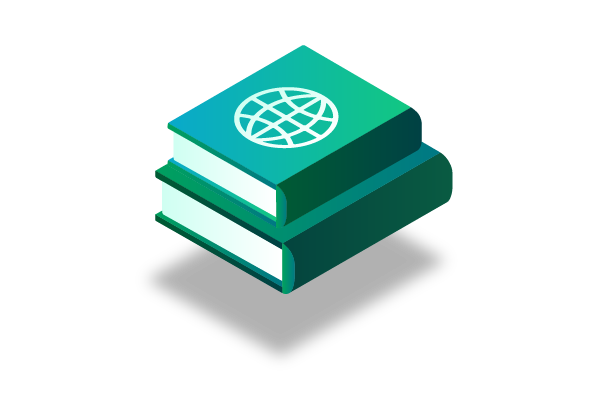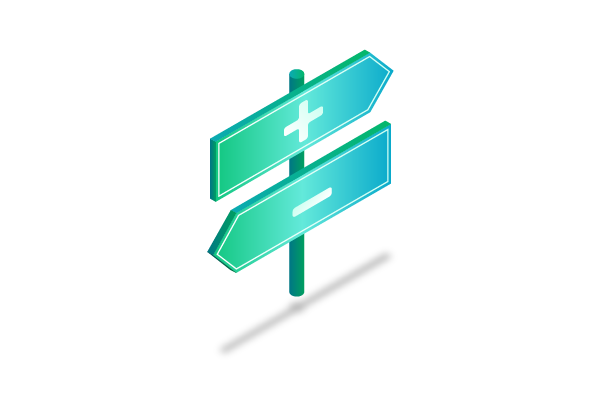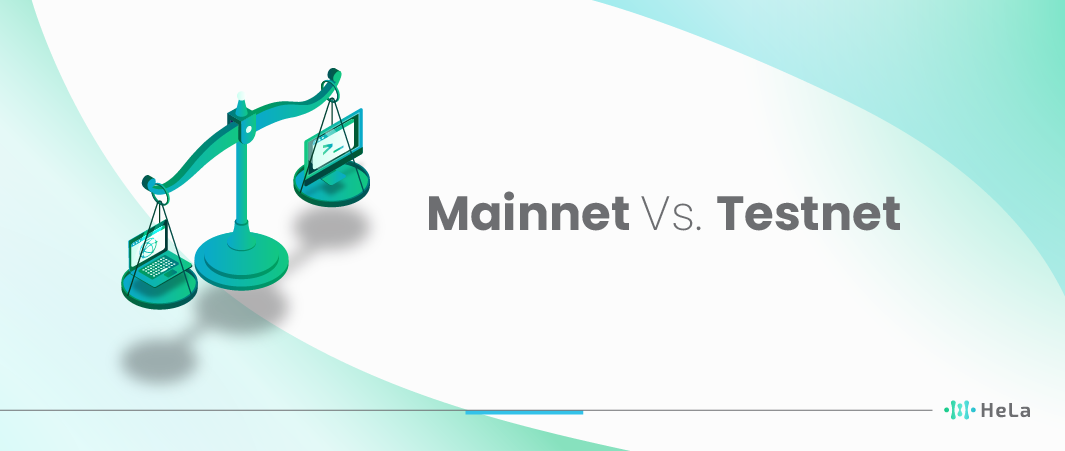In the ever-evolving world of blockchain technology, two concepts that often pique the curiosity of enthusiasts are ‘Mainnet’ and ‘Testnet’. While they might sound interchangeable, their roles within the blockchain ecosystem differ drastically. This article unravels the intricate web of similarities and differences between Mainnet and Testnet, elucidating their individual purposes, advantages, and practical applications.
As the world becomes more digital, understanding blockchain’s key components becomes paramount for everyone, from developers to casual users. Think of Mainnet and Testnet as two sides of the same coin, both essential yet serving distinct purposes in the greater ecosystem.
Whether you’re new to the realm of blockchain or a seasoned expert, this comprehensive comparison promises to shed new light on the subject. Let’s embark on this enlightening journey.
The Basics of Mainnet and Testnet

Mainnet and Testnet are essential components of blockchain technology, providing a platform for different types of activities within the blockchain ecosystem.
Mainnet
The live and fully operational blockchain network where real transactions take place. This is where all the actual financial and data transactions occur. Cryptocurrencies on the mainnet have real-world value, meaning they can be bought, sold, and used for various purposes, such as purchasing goods and services or as an investment. Transactions on the mainnet are irreversible, meaning once a transaction is added to the mainnet, it becomes a permanent part of the blockchain’s history. Users trust the mainnet for its security and stability, making it the backbone of the blockchain network.
Testnet
A parallel network specifically designed for testing and experimentation. It serves as a sandbox environment where developers, blockchain projects, and users can try out new features, updates, and potential forks without any risk to the real assets or data on the mainnet. Testnet coins have no real-world value; they are often distributed freely or obtained easily from faucets. The lack of value means that users can experiment without worrying about financial consequences. Testnet allows for the identification and resolution of potential issues, vulnerabilities, or bugs before implementing changes on the mainnet, thereby ensuring a more robust and secure blockchain ecosystem.
In summary, Mainnet represents the live, operational, and valuable blockchain network where actual transactions occur, while Testnet provides a safe and isolated environment for testing and experimentation, helping to maintain the integrity and reliability of the mainnet. Both play crucial roles in the development and maintenance of blockchain technology.
The Purpose and Importance
Mainnet and Testnet are essential components in the development and deployment of blockchain networks and cryptocurrencies. They serve distinct purposes and play crucial roles in the development and testing phases of blockchain projects. Here’s a detailed explanation of their purposes and importance:
Mainnet
- Purpose: Mainnet, short for “main network,” is the live and production version of a blockchain network. It represents the real, operational blockchain where actual transactions and operations occur. When a blockchain project transitions to the mainnet, it means that the network is officially launched for public use.
- Importance:
- Real-World Use: Mainnet is where real cryptocurrency transactions take place, allowing users to transfer, trade, and store digital assets.
- Decentralization: It demonstrates the true decentralized nature of the blockchain, as there are no central authorities controlling it.
- Economic Value: Cryptocurrencies on the mainnet have economic value and can be used for various purposes, including investments, payments, and as a store of value.
- Security and Resilience: Mainnets are subjected to real-world threats and attacks, which encourages the network to continually improve its security and resilience.
- Consensus: It showcases the consensus mechanism used by the blockchain, whether it’s proof of work (PoW), proof of stake (PoS), or another consensus algorithm.
Also Read: What is Litepaper? A Step-by-Step Beginner’s Guide to Writing and Formatting
Testnet
- Purpose: Testnet, short for “test network,” is a parallel, separate blockchain environment created for testing and development purposes. It is a replica of the mainnet, but the tokens on the testnet have no real-world value. Developers use testnets to experiment, identify and fix bugs, and assess the performance of their blockchain applications before deploying them on the mainnet.
- Importance:
- Risk-Free Testing: Testnets provide a safe environment for developers to test smart contracts, dApps, and other blockchain applications without the risk of losing real assets.
- Community and Developer Feedback: By inviting the community and developers to test and provide feedback on the testnet, project teams can make improvements and enhancements based on real-world usage.
- Protocol Upgrades: Testnets are used to validate and test protocol upgrades and changes before implementing them on the mainnet, preventing potential disruptions or vulnerabilities.
- Interoperability: Developers can test how their applications interact with other smart contracts and services in a controlled environment.
- Scalability and Performance: Testnets help assess the scalability and performance of the blockchain network under various conditions, enabling optimization before launching on the mainnet.
The mainnet is the live and operational blockchain where real transactions and activities occur, while the testnet is a sandbox environment for development, testing, and experimentation. Both are essential in the blockchain development cycle, with the mainnet representing the culmination of development efforts and the testnet serving as a critical step in ensuring the reliability, security, and functionality of blockchain projects.
Advantages and Limitations

Mainnet and Testnet are two essential components of blockchain networks, each serving specific purposes in the development and deployment of decentralized applications (DApps) and smart contracts. Let’s delve into the advantages and limitations of both:
Mainnet Advantages
- Real-World Use: Mainnet is the live and production version of a blockchain network. It allows actual transactions and data to be recorded on the blockchain. This real-world use is its primary advantage because it is where users can engage with DApps and transfer real assets.
- Decentralization and Security: Mainnet is highly secure due to the robust network of nodes and miners. Transactions on the mainnet are confirmed through consensus mechanisms, such as proof of work (PoW) or proof of stake (PoS), ensuring the integrity of the blockchain.
- Economic Value: On the mainnet, cryptocurrencies and tokens have real economic value. Users can buy, sell, and trade these assets on various exchanges, making it a viable platform for economic activities and investments.
Mainnet Limitations
- Cost: Transactions on the mainnet often incur fees, which can be a disadvantage for developers testing their applications. These fees are necessary to incentivize miners and secure the network but can be a barrier for testing.
- Immutable Transactions: Once a transaction is recorded on the mainnet, it is nearly impossible to reverse or modify. This immutability can be problematic if there are errors or vulnerabilities in a smart contract, as they cannot be easily fixed.
Testnet Advantages
- Cost-Effective Development: Testnets provide a risk-free environment for developers to test their applications and smart contracts without incurring real transaction fees. This cost-effective testing allows for iterative improvements and debugging.
- Rapid Iteration: Developers can deploy and experiment with their projects on testnets quickly. This agility supports a faster development cycle and the ability to identify and rectify issues before launching on the mainnet.
- No Real Economic Value: Tokens on testnets have no real economic value, so there’s no risk of losing money due to mistakes or testing errors.
Testnet Limitations
- Limited Real-World Data: Testnets lack the real-world data and user interactions that are present on the mainnet. This can make it challenging to simulate all possible scenarios and potential issues.
- Security Differences: Testnets may not have the same level of security as the mainnet, as they are typically less attractive to malicious actors. Therefore, vulnerabilities identified on testnets might not be immediately relevant to the mainnet.
The mainnet is where the real economic activity happens, offering security and decentralization, but it comes with costs and immutability. Testnets, on the other hand, provide a safe and cost-effective environment for development and testing but may not fully replicate real-world conditions. These two environments complement each other in the blockchain development lifecycle, with developers using testnets to iterate and refine their applications before deploying them on the mainnet.
Real-world Application Examples
Mainnet and testnet are terms commonly used in the context of blockchain technology, specifically in relation to cryptocurrencies like Bitcoin and Ethereum. These terms refer to different blockchain networks that serve distinct purposes. Here are real-world application examples of both mainnet and testnet:
Mainnet
Mainnet is the primary blockchain network where popular cryptocurrencies like Bitcoin, Ethereum, and Litecoin operate. When you transact using these coins on their respective mainnets, you’re engaging in real, live transactions. These networks are characterized by high security, a large user base, and real economic value. They are the backbone of the cryptocurrency ecosystem and serve as the ultimate destination for transactions, storage of value, and decentralized application deployment.
Testnet
Ethereum’s Ropsten and Rinkeby are classic examples of testnets, which are parallel blockchain networks created for testing and development purposes. Developers use these testnets to experiment with and debug their decentralized applications (DApps) and smart contracts before deploying them on the Ethereum Mainnet. Testnets provide an environment where developers can work with tokens that have no real-world value and simulate various scenarios to ensure their applications function as intended. They offer a crucial space for fine-tuning and perfecting blockchain-based solutions before they go live on the mainnet, thus helping to prevent costly errors and vulnerabilities.
Navigating the Future: Evolving Roles of Mainnet and Testnet

The rapid development in blockchain technology suggests the roles of Mainnet and Testnet might evolve significantly in the coming years. Mainnet will always remain the principal platform for real-world applications, serving as the primary blockchain network where actual transactions and smart contracts are executed. However, the future might see Testnet taking on more extensive and sophisticated testing mechanisms, including real-world simulations, to ensure the utmost robustness and reliability of blockchain systems.
In this evolving landscape, Testnet will not merely serve as a sandbox for developers to test their code but will play a critical role in ensuring the resilience and security of Mainnet. Testnet’s growing importance will stem from its ability to replicate real-world scenarios, helping developers and blockchain stakeholders identify vulnerabilities and potential issues before they affect the live Mainnet. This transition marks a significant shift in how blockchain technology is developed, tested, and ultimately deployed for mainstream use.
Also Read: Disadvantages and Advantages of Decentralization
Furthermore, as blockchain technology becomes more accessible and comprehensible to a wider audience, the distinction between Mainnet and Testnet will become crucial knowledge, not just for developers and industry professionals but also for everyday users. Understanding the differences between these two networks will empower users to make informed decisions, especially when engaging with blockchain-based applications, cryptocurrencies, and smart contracts. This knowledge will enable users to distinguish between real transactions on Mainnet and simulated activities on Testnet, ultimately enhancing their confidence and trust in the technology.
In summary, the evolving roles of Mainnet and Testnet represent a pivotal transition in the blockchain ecosystem. While Mainnet remains the bedrock for real-world blockchain applications, Testnet’s expanding capabilities and importance for comprehensive testing and simulation will reshape the development and adoption of blockchain technology. As blockchain continues to integrate into our daily lives, the ability to discern between these two networks will be essential for all stakeholders, fostering a more informed and secure blockchain ecosystem
Conclusion
Mainnet and Testnet, two fundamental components of the blockchain universe, serve unique and critical functions. As we’ve explored, the Mainnet stands as the epitome of a blockchain project’s vision, turning ideas into real-world applications. In contrast, the Testnet is the unsung hero behind the scenes, ensuring everything runs smoothly by allowing a safe space for trials, errors, and improvements.
As blockchain technology continues its upward trajectory in global significance, understanding the nuances between Mainnet and Testnet becomes more crucial. It’s not just about being well-versed in the technical aspects but appreciating the delicate balance and interplay between experimentation and real-world application.
In the end, Mainnet and Testnet are two pillars holding up the vast and intricate world of blockchain. While they serve different purposes, their end goal remains the same: to advance and refine the world of decentralized technology, making it accessible, efficient, and secure for everyone.
Disclaimer: The information provided by HeLa Labs in this article is intended for general informational purposes and does not reflect the company’s opinion. It is not intended as investment advice or recommendations. Readers are strongly advised to conduct their own thorough research and consult with a qualified financial advisor before making any financial decisions.

I am Carina Caringal, a technical writer specializing in blockchain engineering concepts, decentralized systems, crypto infrastructure, and Web3 technologies. My work focuses on analyzing and translating complex technical mechanisms into precise, structured, and insightful content for both developers and non-technical readers who want a deeper understanding of the decentralized ecosystem.
My background in blockchain and cryptocurrency is rooted in years of independent research, continuous learning, and hands-on exploration across multiple protocols and network architectures. I study the underlying mechanics of distributed ledger technology, from consensus algorithms and smart contract logic to network scalability, security models, cryptographic principles, and interoperability frameworks. This technical foundation shapes the way I approach every article, ensuring accuracy, depth, and relevance.
- Carina Caringalhttps://helalabs.com/blog/author/carina-caringal/
- Carina Caringalhttps://helalabs.com/blog/author/carina-caringal/
- Carina Caringalhttps://helalabs.com/blog/author/carina-caringal/
- Carina Caringalhttps://helalabs.com/blog/author/carina-caringal/

